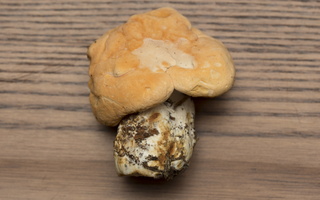
https://en.wikipedia.org/wiki/Hydnaceae The fruit bodies of species in the family have caps and stems that are usually centrally attached. Colours typically range from white to yellow to orange, and the teeth are typically lighter than the cap surface. The flesh is fleshy and brittle, and monomitic (consisting of generative hyphae only). A distinctive characteristic of many species in the family is the structure of the hymenium (spore-bearing surface), which consists of pendant, toothlike spines.
All species within the Hydnaceae are believed to be ectomycorrhizal, forming a mutually beneficial relationships with the roots of living trees and other plants. Basidiocarps typically occur on the ground or in leaf litter in woodland. The family has a cosmopolitan distribution. Several species of Hydnum are edible. Phylum: Basidiomycota Class: Agaricomycetes Order: Cantharellales
